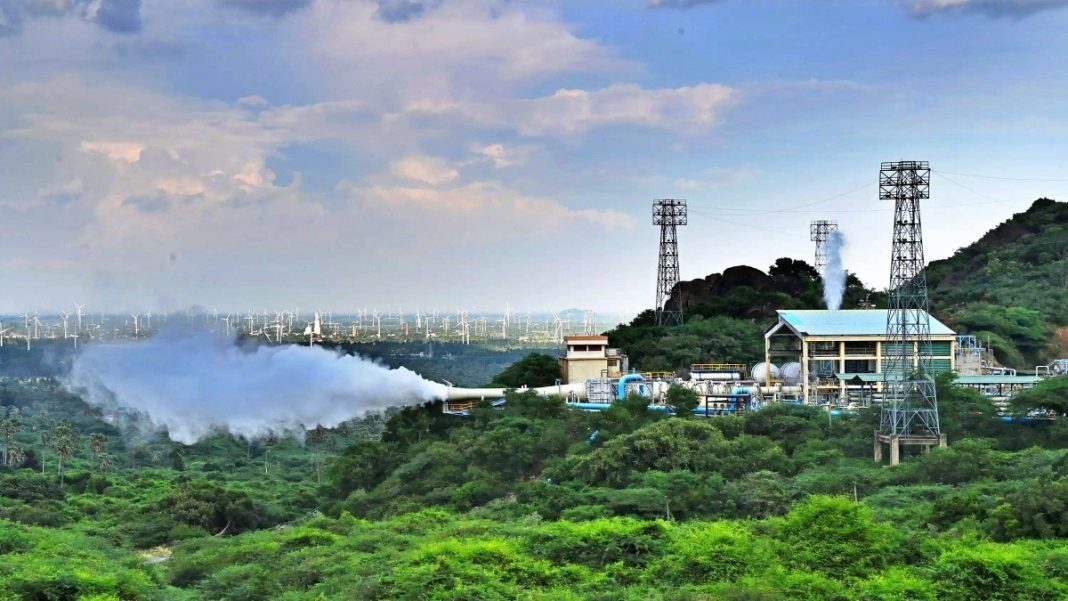Key Takeaways
- ISRO successfully tested a new bootstrap start method for the CE20 cryogenic engine
- This eliminates the need for auxiliary stored-gas systems, reducing weight
- The breakthrough enables multiple in-flight restarts for complex missions
- Directly benefits the upcoming Gaganyaan human spaceflight mission
The Indian Space Research Organisation has achieved a critical breakthrough for its Gaganyaan human spaceflight program, successfully testing a new startup method for the CE20 cryogenic engine that powers the LVM3 launch vehicle.
Landmark Engine Test
On November 7, 2025, engineers at ISRO’s Propulsion Complex in Mahendragiri demonstrated the CE20 engine in bootstrap start mode under simulated high-altitude vacuum conditions. This marks the first time ISRO has achieved bootstrap starting for a gas-generator cycle cryogenic engine without auxiliary stored-gas systems – a feat that appears to be a global first.
Revolutionary Startup Method
The flight-proven CE20 engine typically uses stored gas to ignite turbopumps, requiring additional hardware and dedicated gas bottles for every restart. While reliable, this approach adds weight and reduces payload capacity, limiting mission flexibility for complex orbital maneuvers.
The new bootstrap method changes this paradigm completely. ISRO deployed a multi-element igniter in both the thrust chamber and gas generator. After initial ignition, the gas generator activated using only tank-head pressure, allowing turbopumps to spin up autonomously. The engine then smoothly reached stable operation, proving the reliability of bootstrap starting under real mission conditions.
Enhanced Mission Capabilities
This innovation significantly boosts the LVM3 rocket’s performance. By eliminating auxiliary startup systems, the vehicle becomes lighter and more efficient, enabling increased payload capacity to orbit. The technology also allows ISRO to execute multiple in-flight restarts effortlessly – essential for multi-orbit deployments, complex mission profiles, and human spaceflight requirements.
Gaganyaan Mission Impact
For India’s ambitious Gaganyaan mission, which aims to send Indian astronauts to space aboard an Indian rocket for the first time, this advancement provides crucial technical capabilities. With improved restart capability and greater operational flexibility, the CE20 engine’s new bootstrap mode strengthens ISRO’s position in both scientific and commercial space sectors while accelerating progress toward India’s historic crewed launch.





